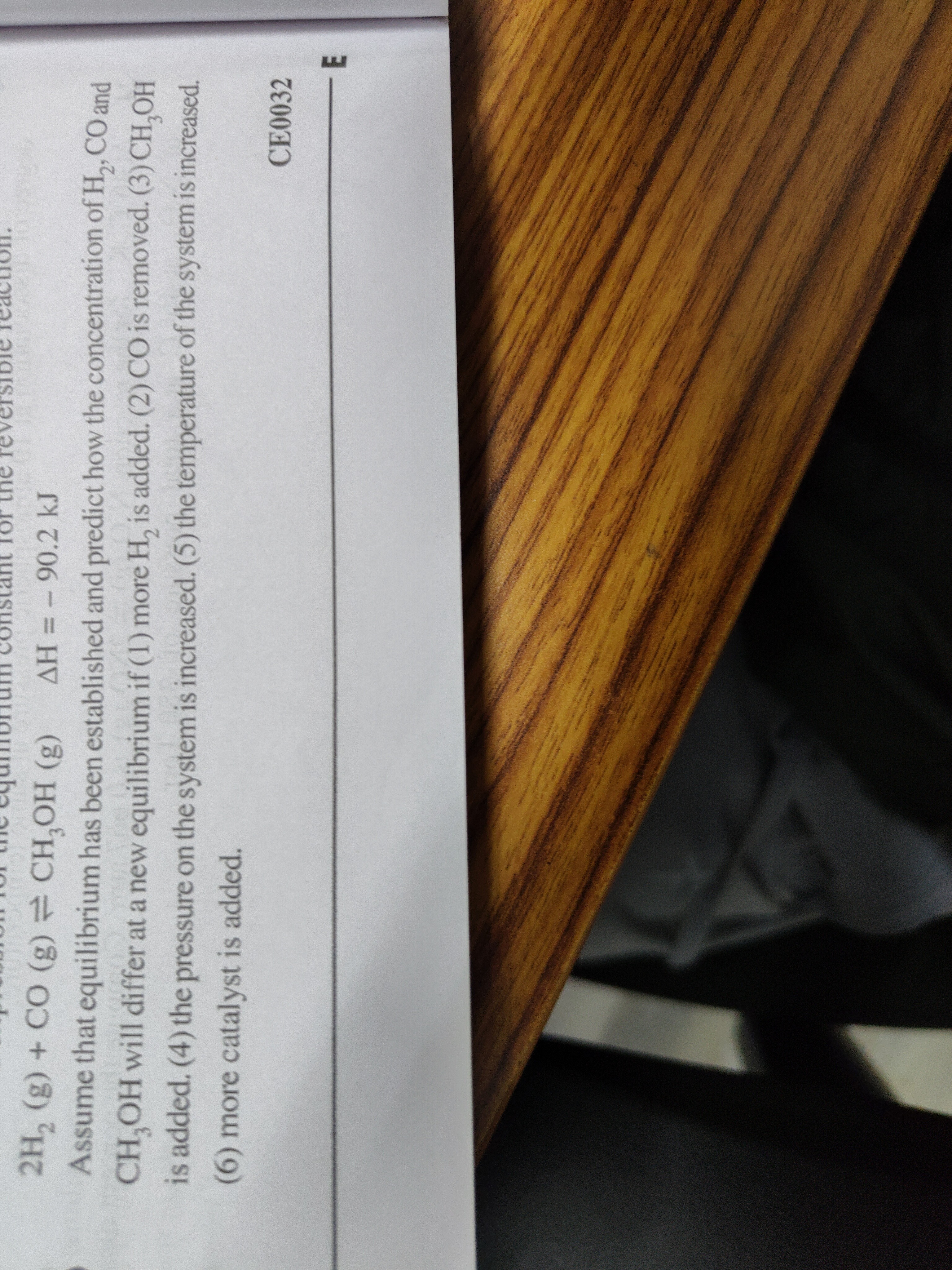Question
Question: The reaction $2H_2(g) + CO(g) \rightleftharpoons CH_3OH(g) \quad \Delta H = -90.2 \text{ kJ}$ is at ...
The reaction 2H2(g)+CO(g)⇌CH3OH(g)ΔH=−90.2 kJ is at equilibrium. Predict how the concentration of H2, CO and CH3OH will differ at a new equilibrium if each of the following changes is made: (1) more H2 is added. (2) CO is removed. (3) CH3OH is added. (4) the pressure on the system is increased. (5) the temperature of the system is increased. (6) more catalyst is added.

Answer
- More H2 is added: [H2] increases, [CO] decreases, [CH3OH] increases.
- CO is removed: [H2] increases, [CO] decreases, [CH3OH] decreases.
- CH3OH is added: [H2] increases, [CO] increases, [CH3OH] increases.
- The pressure on the system is increased: [H2] decreases, [CO] decreases, [CH3OH] increases.
- The temperature of the system is increased: [H2] increases, [CO] increases, [CH3OH] decreases.
- More catalyst is added: [H2] remains the same, [CO] remains the same, [CH3OH] remains the same.
Explanation
Solution
Le Chatelier's Principle states that if a change of condition is applied to a system in equilibrium, the system will shift in a direction that relieves the stress.
- Adding H2 (reactant) shifts equilibrium to the right.
- Removing CO (reactant) shifts equilibrium to the left.
- Adding CH3OH (product) shifts equilibrium to the left.
- Increasing pressure favors the side with fewer moles of gas. Reactants have 3 moles, products have 1 mole. Pressure increase shifts equilibrium to the right.
- The reaction is exothermic (ΔH<0). Increasing temperature shifts equilibrium in the endothermic direction (left).
- A catalyst does not affect equilibrium position.
